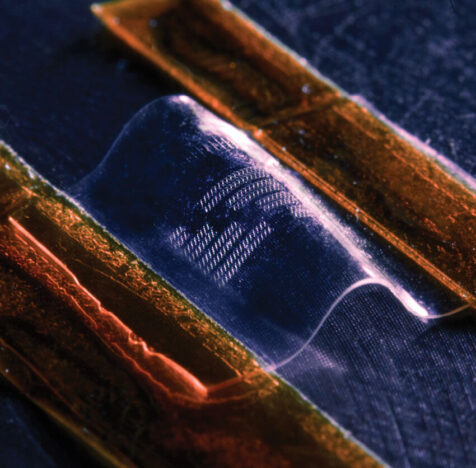Device Fabrication

Putting it All Together
In materials science and engineering, device fabrication is the process of assembling discrete materials into a functional form. Materials scientists and engineers build devices, such as electronic or optical devices, with tailored properties that can be used for a range of applications, including information technology, renewable energy, and medical treatment.
The steps involved in device fabrication can vary depending on the type of device being developed and the materials used. For example, the fabrication process for a solar cell may involve the layering of thin films of photovoltaic materials onto a surface; producing a semiconductor device may involve the use of lithography to etch a silicon wafer.
Device Fabrication at DMSE
DMSE researchers make all kinds of devices. They’re developing new materials and processes for fabricating more efficient solar cells and devices for storing energy such as solar cells and batteries. Research teams are assembling electronics components such as diodes and transistors, including a rechargeable battery in the form of a fiber that can be woven into fabrics. And for health and medicine, they’re fashioning fibers from polymers and composite materials that can deliver drugs to the brain.
Related Materials
Related Faculty and Researchers
Key Publications
Significantly enhanced sub-ambient passive cooling enabled by evaporation, radiation, and insulation
Achieved substantial cooling capacity by controlling the effects of evaporative cooling, radiation, and thermal transport. Even in high-humidity areas, the process works without electricity and needs very little water.
Reconfigurable all-dielectric metalens with diffraction-limited performance
Proved that you don’t need mechanical movement to change the focus of a lens. Instead, a transparent “metalens” changes the way it interacts with infrared light when it undergoes heat-based phase transformation. To see objects far and near, one would simply heat the material using microheaters.






















